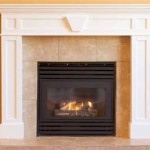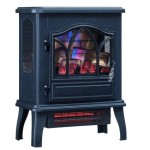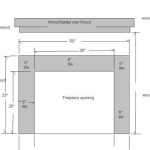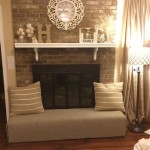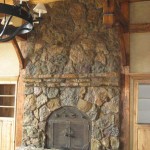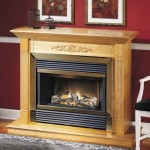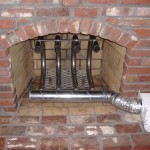Fireplace Repair San Diego: Ensuring Safety and Efficiency
Fireplaces, whether gas or wood-burning, contribute significantly to the ambiance and comfort of homes in San Diego. Regular use, however, inevitably leads to wear and tear. Addressing these issues promptly through professional fireplace repair becomes essential not only for maintaining the aesthetic appeal but, more importantly, for ensuring the safety and efficient operation of the appliance. This article provides a comprehensive overview of fireplace repair in San Diego, outlining common problems, diagnostic procedures, repair techniques, and preventive maintenance strategies.
San Diego's diverse climate, ranging from mild coastal conditions to hotter inland temperatures, influences the frequency and type of fireplace usage. Coastal homes may utilize fireplaces primarily for supplemental heating and aesthetic purposes, while inland residences might rely on them more heavily during cooler evenings. This variation in usage patterns necessitates tailored inspection and repair approaches.
Understanding the different types of fireplaces present in San Diego homes is crucial for effective repair. Wood-burning fireplaces, representing a more traditional option, require careful chimney maintenance to prevent creosote buildup and potential chimney fires. Gas fireplaces, known for their convenience and cleaner burning, rely on gas lines and sophisticated ignition systems that require specialized expertise for repair. Electric fireplaces, offering a simple and often portable solution, present their own set of electrical component-related challenges.
Common Fireplace Problems Requiring Repair
Several common problems can necessitate fireplace repair in San Diego. These issues can range from minor inconveniences to serious safety hazards. Recognizing these problems early allows homeowners to seek professional assistance before they escalate into more extensive and costly repairs.
One prevalent issue in wood-burning fireplaces is creosote buildup in the chimney. Creosote is a highly flammable byproduct of incomplete combustion that accumulates on the interior walls of the chimney. If left unaddressed, creosote can ignite, leading to a dangerous chimney fire. Signs of creosote buildup include thick, black, tar-like deposits inside the chimney and a persistent smoky smell even when the fireplace is not in use.
Damaged or cracked firebricks are another common concern in wood-burning fireplaces. Firebricks line the firebox, protecting the surrounding masonry from the intense heat of the fire. Over time, these bricks can crack or crumble due to thermal stress. Damaged firebricks reduce the fireplace's efficiency and can compromise the structural integrity of the firebox. Replacing damaged firebricks promptly prevents further deterioration and potential hazards.
For gas fireplaces, common problems often involve the gas supply system or the ignition mechanism. A malfunctioning gas valve can lead to inconsistent flame height or difficulty starting the fireplace. Pilot light issues, such as a pilot light that frequently goes out or refuses to ignite, can also indicate a problem with the gas valve or thermocouple. A faulty ignition system, including the igniter or spark module, can prevent the fireplace from starting altogether.
Other potential problems include gas leaks, which are a serious safety hazard requiring immediate attention. Signs of a gas leak include a distinct odor of gas near the fireplace or gas lines. Any suspected gas leak should be reported to the gas company and a qualified technician should be contacted for repair. Blocked or damaged vents can also impede proper combustion and ventilation, leading to carbon monoxide buildup. Regular inspection and cleaning of the venting system are vital to prevent this hazard.
Electric fireplaces, while generally simpler in design, can experience electrical issues such as malfunctioning heating elements, faulty thermostats, or damaged wiring. These problems typically require the attention of a qualified electrician experienced in fireplace repair.
Diagnostic Procedures for Fireplace Repair
Effective fireplace repair begins with a thorough diagnostic assessment to accurately identify the underlying cause of the problem. A qualified technician will employ a range of techniques and tools to evaluate the fireplace's components and performance. This detailed evaluation ensures that the appropriate repair solutions are implemented.
For wood-burning fireplaces, a chimney inspection is a crucial first step. This inspection typically involves a visual examination of the chimney's exterior and interior for signs of damage, such as cracks, loose bricks, or spalling mortar. A chimney sweep may use specialized cameras to inspect the chimney flue for obstructions, creosote buildup, or other debris. The firebox is also carefully inspected for damaged firebricks or other structural issues.
Gas fireplace diagnostics involve a comprehensive assessment of the gas supply system, the ignition system, and the venting system. The technician will check the gas pressure to ensure it is within the specified range. The gas valve and pilot light assembly are inspected for leaks, corrosion, or other damage. The ignition system, including the igniter and spark module, is tested to verify proper functionality. Carbon monoxide testing is often performed to ensure that the fireplace is venting properly and that no dangerous levels of carbon monoxide are present.
Electrical testing is essential for diagnosing problems with electric fireplaces. The technician will use a multimeter to check the voltage and current flow to the heating element and other components. The thermostat is tested to ensure it is accurately regulating the temperature. Wiring connections are inspected for loose or damaged connections. Any faulty components are identified and replaced.
In addition to visual inspections and electrical testing, a qualified technician may also perform a performance test to evaluate the fireplace's overall efficiency. This test involves measuring the heat output and fuel consumption to determine if the fireplace is operating within its optimal range.
Repair Techniques and Best Practices
Once the diagnostic assessment is complete, the technician will implement the appropriate repair techniques to address the identified problems. These techniques vary depending on the type of fireplace and the nature of the damage. Adhering to industry best practices is essential for ensuring the safety and effectiveness of the repairs.
For wood-burning fireplaces, chimney sweeping is often necessary to remove creosote buildup and other debris. This process involves using specialized brushes and tools to scrub the interior walls of the chimney flue. In cases of severe creosote buildup, chemical treatments may be necessary to loosen the deposits before they can be removed. Repairing damaged firebricks involves removing the old bricks and installing new ones using heat-resistant mortar. Cracks in the firebox masonry can be repaired using a high-temperature sealant.
Gas fireplace repairs may involve replacing a faulty gas valve, repairing or replacing a damaged pilot light assembly, or replacing a malfunctioning ignition system. Gas leaks must be addressed promptly and effectively. This typically involves locating the source of the leak and tightening or replacing the affected gas lines or fittings. Any work on the gas supply system should be performed by a qualified technician with expertise in gas line repair.
Electrical fireplace repairs may involve replacing a faulty heating element, replacing a malfunctioning thermostat, or repairing damaged wiring. It is crucial to use the correct replacement parts and to follow all applicable electrical codes and safety guidelines.
Regardless of the type of fireplace, proper ventilation is essential for safe and efficient operation. Any obstructions in the venting system must be removed to ensure that combustion gases are properly exhausted. Damaged vents should be repaired or replaced to prevent carbon monoxide buildup.
After completing the repairs, the technician will perform a final inspection to ensure that all components are functioning properly and that the fireplace is operating safely. This inspection may include carbon monoxide testing to verify that the fireplace is venting properly and that no dangerous levels of carbon monoxide are present.
Following stringent safety protocols is paramount during any fireplace repair procedure. This includes wearing appropriate personal protective equipment, such as safety glasses and gloves, and adhering to all applicable building codes and regulations. Proper disposal of any hazardous materials, such as creosote or damaged gas fittings, is also essential.

The 10 Best Fireplace Repair Services In San Diego Ca 2024

Fireplace Repair Kleen Sweep San Diego Fireplaces

Top 10 Best Gas Fireplace Repair In San Diego Ca Updated 2024 Yelp

San Diego Fireplace Remodels Design And Repair In

San Diego Fireplace Remodels Design And Repair In

Fireplace Chimney Repair San Diego County

San Diego Chimney Fireplace Repair Remodel Design Authentic Fireplaces Inc 858 274 6134

Services Archive San Diego Chimney Sweep Prefabricated Fireplace Specialists

Services Farrell S Fireside
The 10 Best Fireplace Repair Services In San Diego Ca 2024
Related Posts

